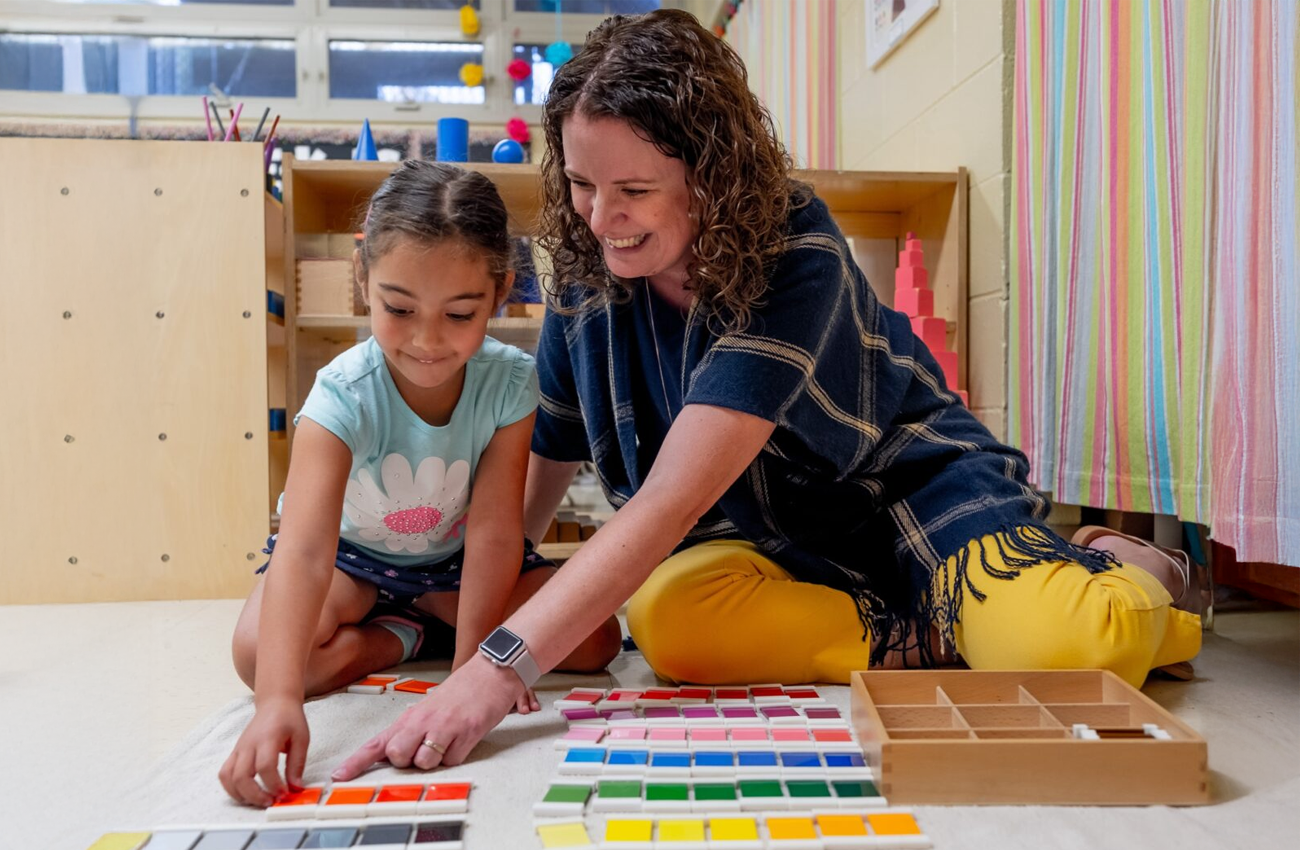
Her Nominators Say:
“As a parent of two children, I feel I have a good idea of what makes an effective and caring teacher. This is the kind of person I am excited to send my child to be with every day, to learn and grow and become a caring and thoughtful person. I wish every child had the opportunity to go to the classroom with Shannon Fitzpatrick at the Grayson School, as she has made such a positive difference in the life of my child.” – The Dahl Family

Get to know Shannon:
What is your teaching philosophy?
I want my students to be challenged, and to look at problems from multiple perspectives at every age along the way. I want my students to be curious, to ask questions. I want them to wrestle with intellectually stimulating work and learn the pleasure of experiencing success after putting in the hard work. Being able to write an exciting, flexible curriculum allows my students to determine the pace at which they learn and this absolutely contributes to their emotional, social, and intellectual growth. As an educator, a mother, and a wife, that’s what I want for myself and my family, as well.
How do you make your classroom/teaching environment feel welcoming and dynamic?
I genuinely love to be with my students and my colleagues, and I think that that excitement — that passion, really — shows through. My students are hungry to engage with material that will stretch their minds. I pride myself on working hard to honor what my students already know and then give them new curriculum that they can really dig into.
What would you love for the parents of your kids to know?
I really enjoy getting to know the new families at The Grayson School. The support from our families and gifted community is unparalleled — it’s unlike anything I’ve experienced in any school setting locally or abroad, and I feel grateful to be a part of it. My main priority is for their children to be happy, which can look very different for each child.
How do you encourage reluctant learners?
I try to be realistic, practical and armed with a sense of humor when trying to figure out the real reason a student is stuck or unhappy with the work we are doing for some reason. If students have their basic needs met, I examine the activity and my objectives, as well as how students are being asked to meet them. One of the benefits of our very small classes is that I spend lots of time talking to each of my students, so I can look at how they interact with materials to see if there are different tools I could be offering. Sometimes my students are hesitant to try something because they worry that it won’t look or sound exactly how it does in their head — anxiety which can be paralyzing. Offering alternative options or scaffolding an activity can usually help them through these moments.
How do you resolve problems in the classroom, if a student is disruptive, for example, or if two students aren’t getting along?
I find that giving my students what they need when they need it often eliminates any problem behaviors. Just like adults, my students sometimes need a gross motor break or time away from a particular task (or classmate!) to reset so they can return to the activity and be successful. As a school, we wholeheartedly endorse breaks for students who need them, and we are also lucky to have a fantastic counselor who is available to The Grayson School community.
How can you tell when your material is connecting with your students? How do you measure progress?
Engagement in my classroom doesn’t always look one way: it can sound loud and look like (controlled) chaos, or it can be surprisingly quiet, with students engaging with each other and the activity with a laser focus. We write lengthy, detailed quarterly narratives to comment on each student’s growth. Being able to provide families with specific examples of how their child shines, contributes, or perseveres honors the complexity of students’ learning journeys, and feels more genuine — more truly reflective of their child — than any letter grade.
What has been the most rewarding thing about teaching?
I look forward to school each day for a multitude of reasons. Being an educator is ingrained in me, so it’s a dream that I work at a place that not only keeps my own “spark” lit but also allows me to collaborate with colleagues who also value and love lifelong learning for its own sake. These conditions fuel my personal happiness and fulfillment — something my own children are able to see as they grow — and empower me to be a better mom, wife, and person.





